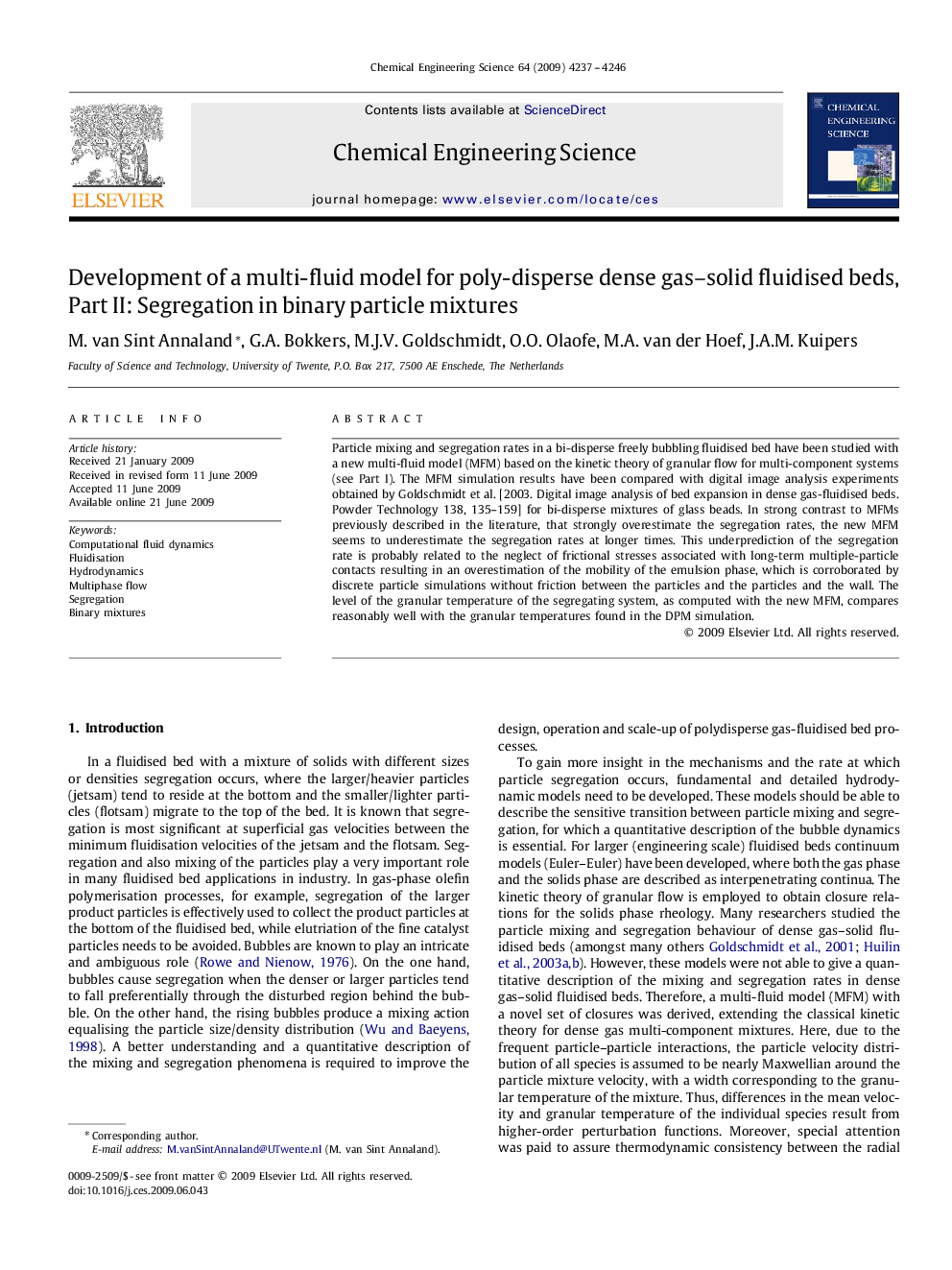| Article ID | Journal | Published Year | Pages | File Type |
|---|---|---|---|---|
| 157455 | Chemical Engineering Science | 2009 | 10 Pages |
Particle mixing and segregation rates in a bi-disperse freely bubbling fluidised bed have been studied with a new multi-fluid model (MFM) based on the kinetic theory of granular flow for multi-component systems (see Part I). The MFM simulation results have been compared with digital image analysis experiments obtained by Goldschmidt et al. [2003. Digital image analysis of bed expansion in dense gas-fluidised beds. Powder Technology 138, 135–159] for bi-disperse mixtures of glass beads. In strong contrast to MFMs previously described in the literature, that strongly overestimate the segregation rates, the new MFM seems to underestimate the segregation rates at longer times. This underprediction of the segregation rate is probably related to the neglect of frictional stresses associated with long-term multiple-particle contacts resulting in an overestimation of the mobility of the emulsion phase, which is corroborated by discrete particle simulations without friction between the particles and the particles and the wall. The level of the granular temperature of the segregating system, as computed with the new MFM, compares reasonably well with the granular temperatures found in the DPM simulation.
